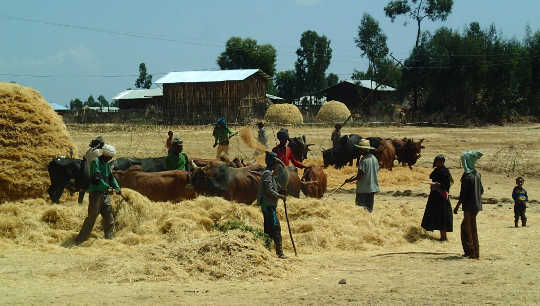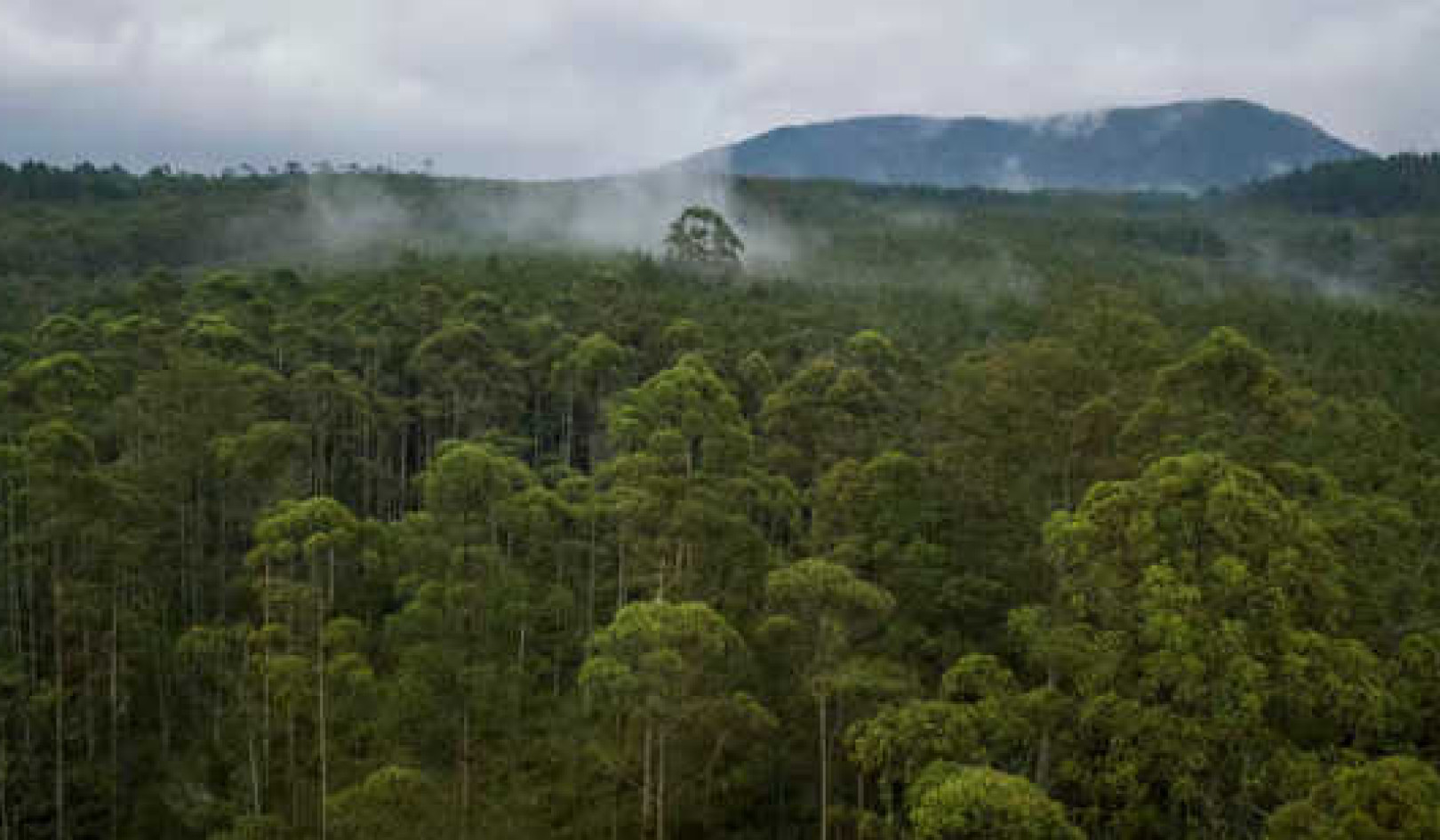 Harvest time at a farm in Oromia in the Amhara region of Ethiopia. Image: //www.flickr.com/photos/120420083@N05/">SarahTz via Flickr
Harvest time at a farm in Oromia in the Amhara region of Ethiopia. Image: //www.flickr.com/photos/120420083@N05/">SarahTz via Flickr
Ethiopia and Morocco praised for pledges on reducing greenhouse gases that are far more ambitious than those of China and Canada.
A review of four governments’ plans for cutting their greenhouse gas (GHG) emissions from agriculture, forestry and other land use praises two developing countries for their ambition.
The review, by the Union of Concerned Scientists (UCS), says Ethiopia and Morocco have plans that leave the strategies of the other two countries, China and Canada, far behind.
The UCS analysis examines how the four countries intend to limit GHGs in the agriculture, forestry and land-use sector ? known collectively as AFOLU.
It finds that despite vast potential to mitigate AFOLU carbon emissions, China and Canada have set their bars low, compared with their poorer counterparts, and fail to be sufficiently specific about the details of their plans.
Reduce Warming
The four countries’ plans are spelled out in their Intended Nationally Determined Contributions (INDCs). These are the pledges made by governments ? in the run-up to the United Nations climate change conference in Paris in December – on how they plan to reduce their global warming emissions.
Earlier this month, Ethiopia and Morocco were the only two governments, out of 15 countries assessed by Climate Action Tracker, that were judged to have submitted INDCs consistent with holding the global temperature rise below the internationally-agreed safety level of 2°C above pre-industrial levels.
Doug Boucher, director of the UCS Tropical Forest and Climate Initiative, said of the AFOLU analysis: “With land-use sector emissions responsible for one-fourth of total global emissions, it’s essential that countries strive to realise their full potential to reduce carbon emissions in this area.
“Their INDCs must also explicitly define their goals and establish a clear framework to implement their plan, monitor its progress, and achieve its aims. Otherwise, it won’t be possible to reduce global emissions sufficiently to keep global temperatures from rising by more than 2°C.”
China, one of the eight countries contributing 57% of all land-use sector emissions, has significant potential to reduce those emissions, according to an earlier UCS study.
It’s essential that countries strive to realise their full potential to reduce carbon emissions in the land-use sector
In its INDC, China undertook to increase forested areas and to reduce nitrous oxide emissions through improved rice field management practices to ensure zero growth in fertiliser use by 2020.
But UCS is critical. The report’s lead author, Kalifi Ferretti-Gallon, says: “It’s hard to tell from China’s INDC if they’re committing to going above and beyond the status quo to do their part to reduce global warming emissions in the land-use sector, or if they’re simply maintaining their current momentum and putting previously planned actions to paper.”
Canada’s INDC is also problematic, UCS says. It found weaknesses in transparency, specificity and ambition, and says Canada’s plans will omit naturally-occurring emissions ? such as the destruction of forests through fire or disease ? from its accounting.
“This strategy would be understandable if such natural contributions were truly beyond human control,” Boucher says.
“However, much of Canada’s forest-related emissions result from forest fires and beetle infestations, both of which are affected by human management and should be taken into account.”
The land-use sector accounts for 88% of global warming emissions in Ethiopia, which proposes to cut its emissions primarily through improved forest and agriculture management policies.
But, while calling the country’s carbon emissions reduction goal “impressive”, UCS says Ethiopia does not specify how far it will be able to reduce its emissions if it cannot obtain funding from abroad.
Level Of Uncertainty
“While Ethiopia’s INDC has outdone China’s ambition and is more forthcoming than Canada’s, their dependence on international financing creates a level of uncertainty,” Boucher says.
Morocco’s INDC is judged the strongest of the four. By modernising its agricultural sector, establishing policies to increase forest areas and rehabilitating existing ecosystems, the country plans to reduce emissions from all sectors of the economy by 13% by 2030 through its own efforts, or 31% with foreign funding.
“China and Canada’s strategies . . . pale in comparison to the priority and specificity Morocco gives it in their INDC,” Ferretti-Gallon says. “Additionally, unlike Ethiopia’s plan, Morocco confirms that action is possible, even without external international financing.
“Morocco has shown a model that other developing nations should emulate in terms of both crafting a strong INDC and taking advantage of the enormous potential to reduce carbon emissions in the land-use sector.” – Climate News Network
About the Author
 Alex Kirby is a British journalist specializing in environmental issues. He worked in various capacities at the British Broadcasting Corporation (BBC) for nearly 20 years and left the BBC in 1998 to work as a freelance journalist. He also provides media skills training to companies
Alex Kirby is a British journalist specializing in environmental issues. He worked in various capacities at the British Broadcasting Corporation (BBC) for nearly 20 years and left the BBC in 1998 to work as a freelance journalist. He also provides media skills training to companies
climate_books





























